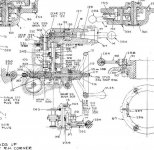partsproduction
Titanium
- Joined
- Aug 22, 2011
- Location
- Oregon coast
An Eisen varispeed head on YCI Supermax iron, the head maybe 5 year old, The power quill feed worked fine until suddenly I needed it and it didn't. It's not in the clutch area, I've checked it out pretty well, with the spindle off and the feed engaged the handle won't "strip" the clutch even with good hand pressure, and the handwheel at the front operates the feed fine.
The problem seems to be a sheared key, either one of the two #10's, the #187, or #11 key, or perhaps the #59 pin? (http://kneemills.com/index.asp?html=Documentation)
Something is spinning on a shaft that's not supposed to be I think.
When I engage the feed it moves in all three gears but the slightest hand pressure opposing the feed stops it, without any clicking or other sounds. I bought an overhaul book and can live without the power quill feed for a while, but the question is this, which key in the drive train is the most likely to have sheared? Or, if the symptoms say it may be something else I'd love to hear it.
Thanks for any help in advance,
parts
The problem seems to be a sheared key, either one of the two #10's, the #187, or #11 key, or perhaps the #59 pin? (http://kneemills.com/index.asp?html=Documentation)
Something is spinning on a shaft that's not supposed to be I think.
When I engage the feed it moves in all three gears but the slightest hand pressure opposing the feed stops it, without any clicking or other sounds. I bought an overhaul book and can live without the power quill feed for a while, but the question is this, which key in the drive train is the most likely to have sheared? Or, if the symptoms say it may be something else I'd love to hear it.
Thanks for any help in advance,
parts


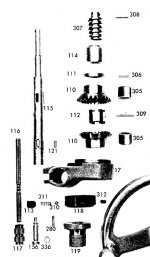
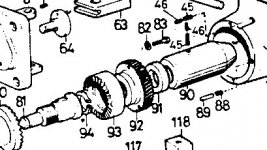
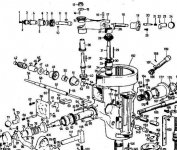
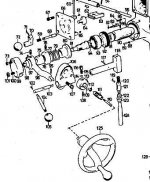
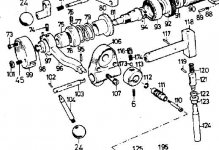



 )
)